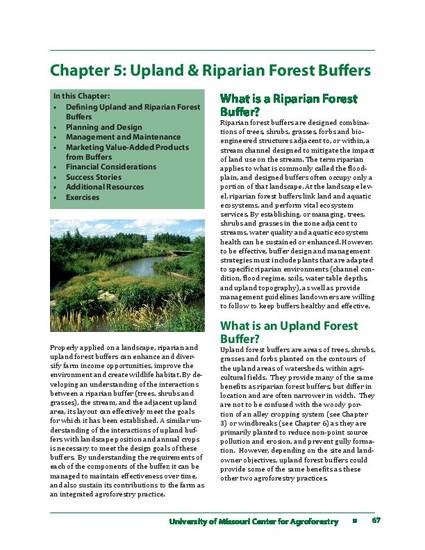
Properly applied on a landscape, riparian and upland forest buffers can enhance and diversify farm income opportunities, improve the environment and create wildlife habitat. By developing an understanding of the interactions between a riparian buffer (trees, shrubs and grasses), the stream, and the adjacent upland area, its layout can effectively meet the goals for which it has been established. A similar understanding of the interactions of upland buffers with landscape position and annual crops is necessary to meet the design goals of these buffers. By understanding the requirements of each of the components of the buffer, it can be managed to maintain effectiveness over time, and also sustain its contributions to the farm as an integrated agroforestry practice.
Available at: http://works.bepress.com/richard_schultz/22/

This chapter is from Training Manual for Applied Agroforestry Practices—2013 Edition Chapter 5 (2013): 67. Posted with permission.